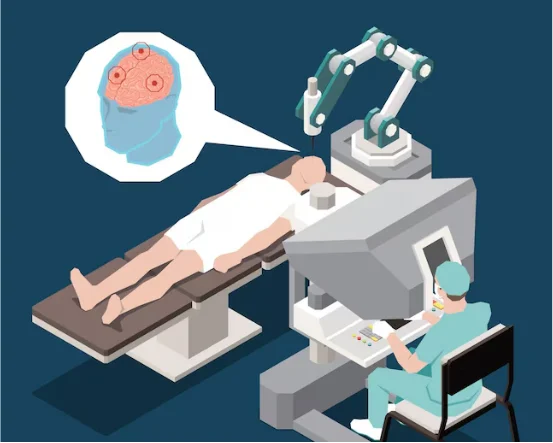Neurosurgery has seen a significant change in recent years and has moved away from the large surgeries that were invasive and painful to sophisticated, less invasive methods. In the midst of these advances that have emerged, neuroendoscopy surgery is emerging as a groundbreaking treatment option in neurosurgery and neurology. This surgical procedure is advanced and provides a more secure, faster and more effective method to treat a wide range of neuro- and spinal issues.
If you or someone in your family suffers from neurological problems knowing the advantages and procedures of neuroendoscopic surgery will assist you in making an informed choice about your health care.
What is Neuroendoscopy Surgery?
Neuroendoscopy is a minimally-invasive surgical procedure used by neurosurgeons in order to detect and treat conditions in the brain, ventricles and the spinal cord. Contrary to traditional brain surgery which requires large incisions and open skulls (craniotomy) the neuroendoscopy technique makes use of tiny openings that allow for an endoscope can be inserted.
An endoscope is a small flexible tube that is equipped by a camera with high definition, as well as light source, which allows surgeons to see inner structures inside of spine or brain in real-time. Instruments that are specially designed are passed through the endoscope to carry out the procedure with precision and with minimal trauma.
Treatment of conditions by Neuroendoscopy
Neuroendoscopy is widely utilized to treat adult and pediatric patients. The most common conditions are:
- The condition is known as hydrocephalus (build-up of fluid inside the brain)
- Brain tumors (especially in the ventricles and close to the center of the brain)
- Colloid cysts
- The Pineal Region Tumors
- Cysts and Arachnoid cysts
- Ventricular tumors
- Tumors and spinal cysts
This approach is especially efficient in treating tumors that are deep in the brain or related fluid diseases without causing significant damage to the surrounding brain tissues.
Why Choose Neuroendoscopy Surgery?
- Minimally Invasive Approach :- The primary benefit of neuroendoscopy lies in its invasive nature. Because the procedure involves small incisions, there is much less trauma, less bleeding, as well as a faster recovery time compared to traditional procedures.
- Reduced Risk of Complications :- Neuroendoscopy reduces the chance of getting infections as well as swelling of the brain and post-operative complications. Patients feel less pain and fewer hospitalizations, and a faster return to their routine life.
- Enhanced Visualization :- Through high-definition cameras and fiber optics that neurosurgeons have an unobstructed, magnified view of the intricate brain structures. This allows for more precise particularly when it comes to removing tumors or maneuvering delicate areas of the brain.
- Improved Outcomes in Pediatric Neurosurgery :- Children who suffer from hydrocephalus usually undergo an endoscopic third Ventriculostomy (ETV) which is an endoscopic procedure that eliminates the need for shunt placement. It provides the long-term benefit of ETV without dependency on devices.
- Faster Recovery & Shorter Hospital Stay :- The majority of patients who undergo neuroendoscopic procedures can return home within a couple of days and resume normal activities earlier than those who undergo conventional open brain procedures. It reduces physical and emotional stress for families as well as patients.
Neuroendoscopy Procedure: What to Expect
Pre-Surgical Evaluation
Before they undergo neuroendoscopy surgery the patient is subjected to:
- Examen of the brain
- CT scans and MRI scans
- Blood tests
- Pre-anesthesia check-up
The team of surgeons explains how the surgery works, as well as its advantages, risks, and anticipated results.
During the Surgery
- Performed under general anesthesia
- A tiny burr hole is made in the skull or in the spinal region.
- An endoscope is inserted into the body to locate the area of interest
- Tumors or cysts, as well as obstructions are eliminated or obliterated
- Accuracy is guaranteed by real-time imaging.
Post-Surgery Care
- The typical hospital stay is 3 days
- The pain is manageable and minimal by medication.
- The follow-up imaging monitors the surgical outcome
- The majority of patients return to their normal activities after a period of 1-2 weeks
Risks and Limitations
Although neuroendoscopy can be reliable and safe, as is every surgical procedure, it comes with risk factors:
- Infection or bleeding
- Completely removing tumors
- The tissues around it are damaged.
- Neurological deficits (rare)
- But, the risks are considerably lower in comparison surgical open-brain surgery. It is essential to select an experienced neurosurgeon and specialist hospital to get the optimal outcomes.
Latest Advances in Neuroendoscopy
As technology advances neuroendoscopic procedures are becoming more precise and accommodating to patients. Recent advances include:
- 3D Endoscopy for improved depth perception
- Neuroendoscopy with robotic assistance for greater accuracy
- Imaging using fluorescence to detect the tumor’s tissues
- Intraoperative MRI to allow real-time navigation
These advances are changing neurosurgery into an easier and more reliable field, with improved outcomes for those with more complex spinal and brain conditions.
Why It Matters: A Patient-Centered Revolution
Patients are demanding treatment options that are efficient and not terribly disruptive to their lives. Neuroendoscopy is a solution to that by decreasing the fear that comes with surgery for the brain, providing the chance of a faster recovery and ensuring less complications.
From a clinic or hospital viewpoint, providing neuroendoscopic treatments could be an USP (Unique Selling Proposition) that draws patients that are seeking out the least invasive spine and brain treatments.
Conclusion
The neuroendoscopy procedure isn’t only a technological advancement, it’s an alternative that will change the course of life for patients suffering from complex spinal or brain conditions. Its minimally invasive nature, short time to recover, and its high accuracy make it an excellent option for both surgeons and patients alike.
You may be a worried parents of children who has hydrocephalus or are an adult who is suffering from a deep-seated head tumor, neuroendoscopic surgical procedure can provide the chance to heal, hope and speedier return to a normal lifestyle.
If you’re considering treatments options, speak with a specialist neurosurgeon that offers the most advanced neuroendoscopy. With the correct diagnosis, skilled hands, and the latest technology, your path to healing can be easier as never before.























